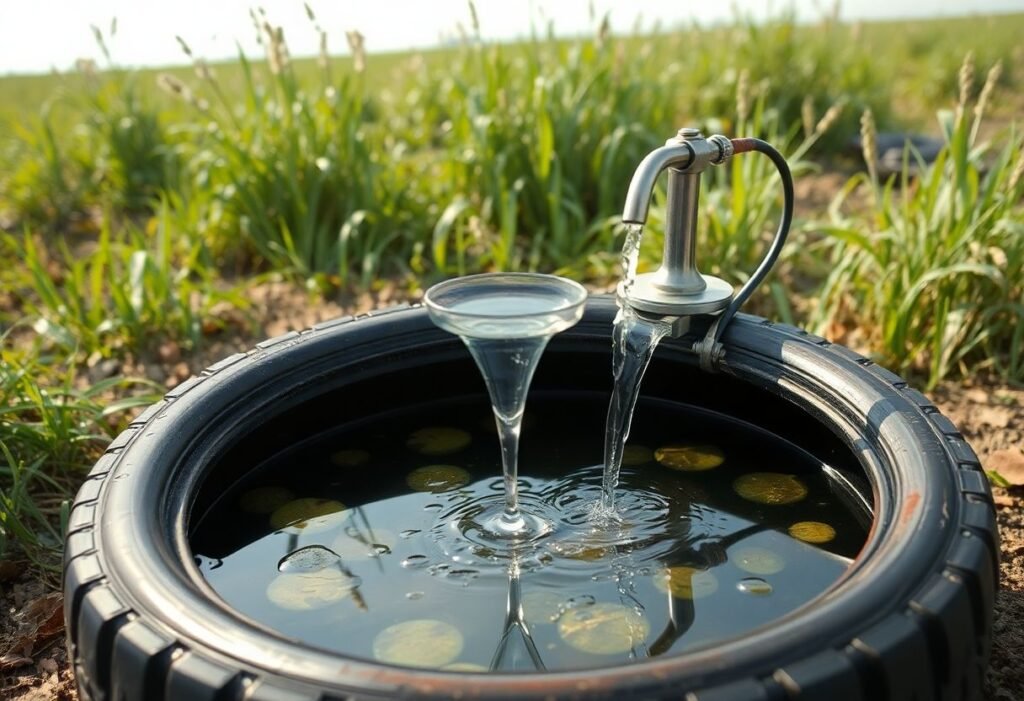This innovative solar still technology, crafted from old tires, presents an efficient solution for water purification, emphasizing its relevance in today’s sustainability efforts.
A Sustainable Approach to Water Purification
Researchers from Canada have introduced a novel device capable of purifying up to 15 cups of water daily at an incredibly cost-effective rate. By repurposing old tires, this solar still not only addresses the critical issue of clean water accessibility but also contributes to environmental sustainability. This innovative method harnesses solar energy to purify water, providing a practical solution for regions facing water scarcity. With its ability to function in real-world settings, this technology showcases the potential of recycling and renewable resources in solving pressing global challenges.
How the Solar Still Operates
The solar still operates on a simple yet effective principle. It utilizes the sun’s energy to heat the water contained within the device made from recycled tires. As the water heats up, it evaporates, separating impurities, and the vapor subsequently condenses, resulting in clean, drinkable water. This process not only provides an essential resource but also minimizes waste by giving new life to discarded materials. By transforming waste into a valuable product, this device exemplifies innovative thinking in both environmental and engineering fields.
Energy Generation Capabilities
In addition to purifying drinking water, this solar still has the added benefit of generating small amounts of electricity. Through advancements in thermoelectric technology, the device can convert temperature differences into electrical energy. This dual functionality maximizes the utility of the system, making it not only a revolutionary water purification method but also a potential power source for small applications. This dual use is particularly beneficial for remote communities where both clean water and electricity may be scarce.
Potential Market Impact
The introduction of this solar still could significantly impact markets, particularly in regions with limited resources for clean water. By providing a cost-effective solution for water purification, it holds the potential to improve public health and reduce the burden of waterborne diseases. Furthermore, the environmental benefits of using recycled materials address both the waste disposal issue and the need for sustainable solutions. This technology may pave the way for broader adoption of similar systems globally, fostering a more sustainable future.
Applications in Developing Regions
This innovative technology is especially pertinent in developing regions where access to clean water is a daily struggle. Implementing solar stills in these areas could lead to substantial improvements in quality of life by reducing the time and effort spent on finding clean water sources. Moreover, as communities adopt this technology, they not only gain autonomy over their water supply but also engage in sustainable practices that align with global environmental goals. The far-reaching implications for public health and community resilience highlight the need for widespread support and implementation of such technologies.
Collaborative Efforts and Future Prospects
As this technology evolves, collaboration among governments, NGOs, and private sectors is crucial for scaling production and distribution. investment in research and development can enhance efficiency and facilitate the deployment of solar stills in various climates and conditions. In pursuing these goals, stakeholders can leverage this technology to foster sustainable development, ultimately contributing to global efforts in combating water scarcity and promoting renewable resources. With continued innovation, the future of solar still technology looks promising, helping to redefine how communities across the globe can tackle their water needs.
Disclaimer: This article is intended for informational purposes only and does not constitute professional advice.





















